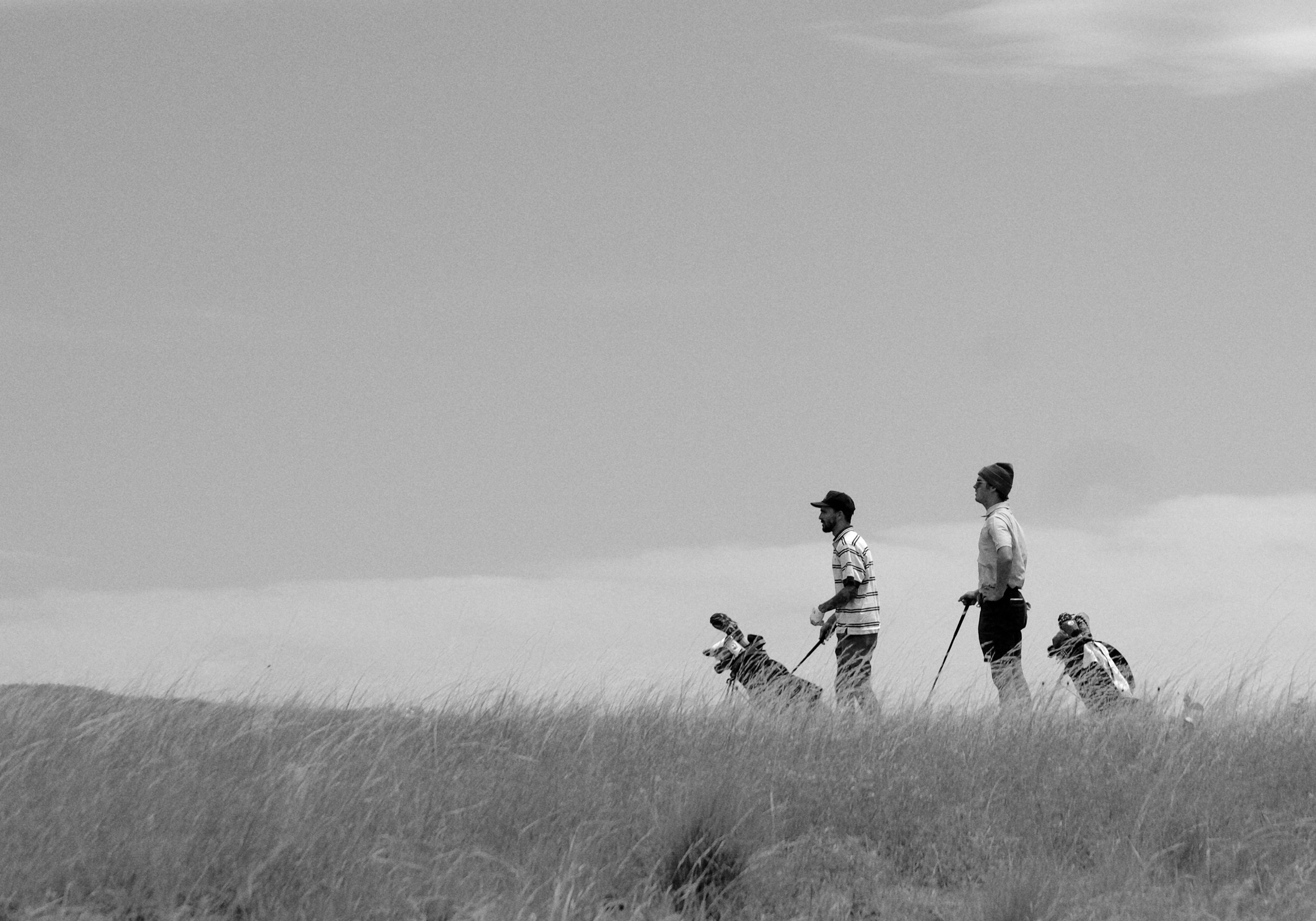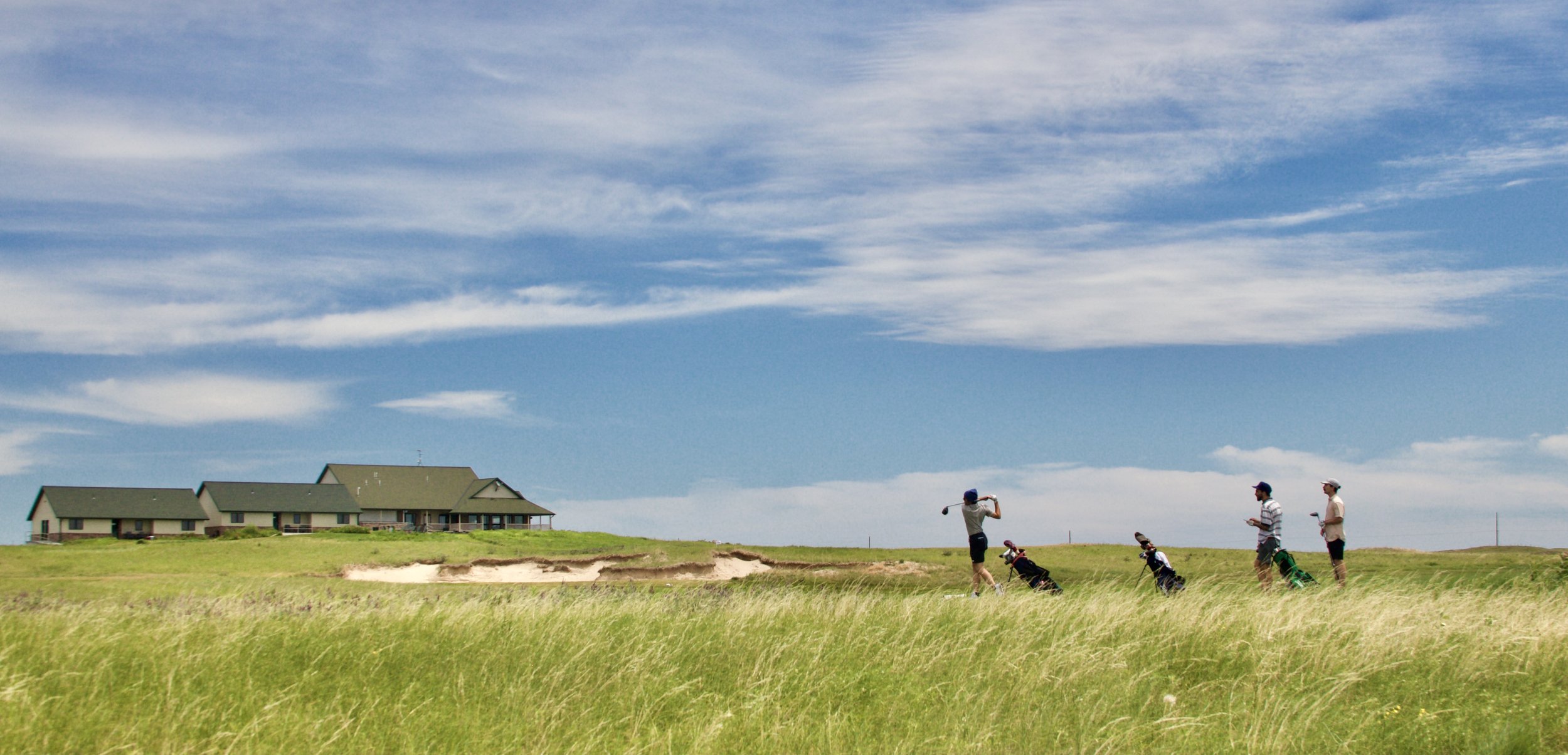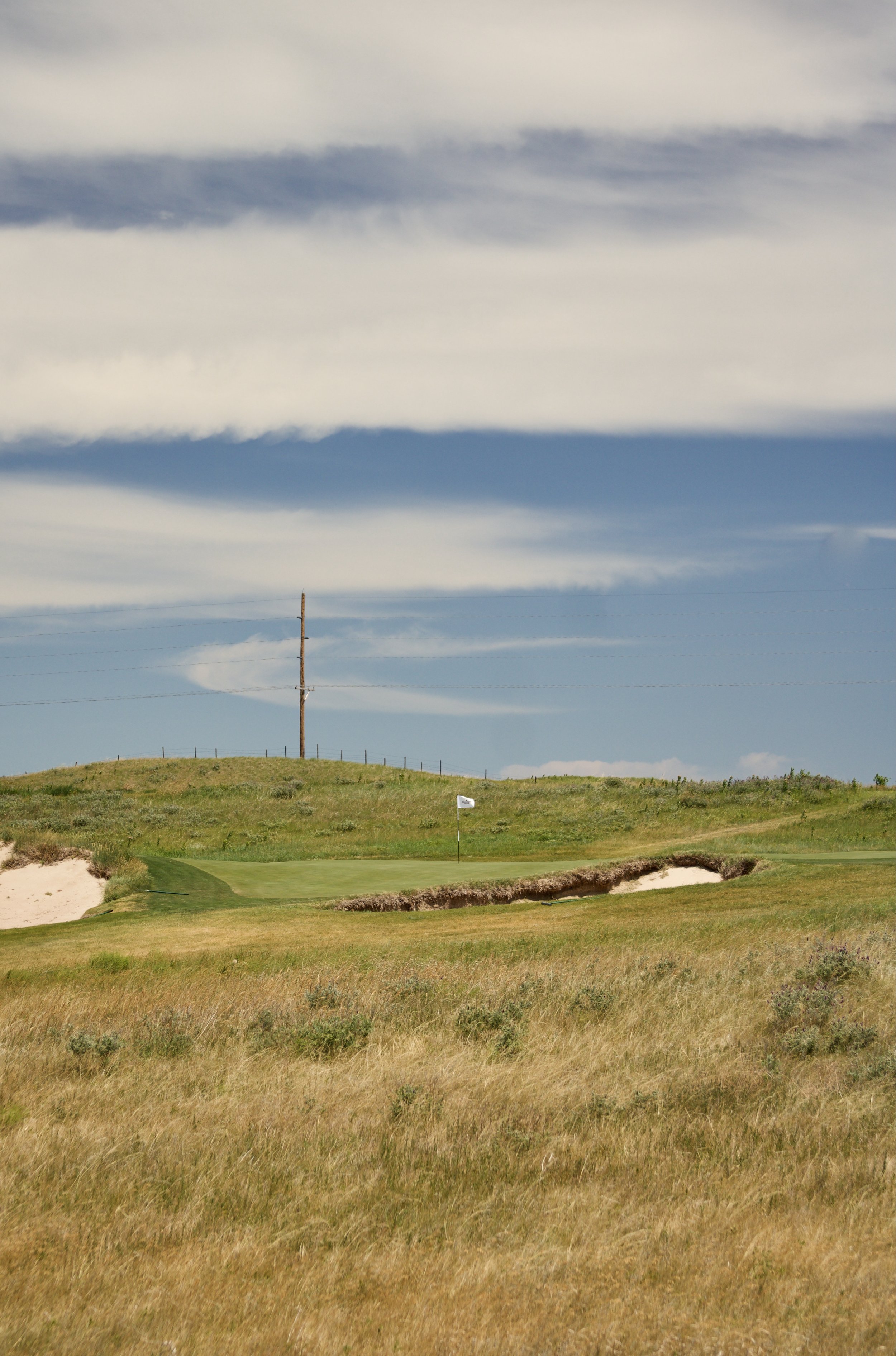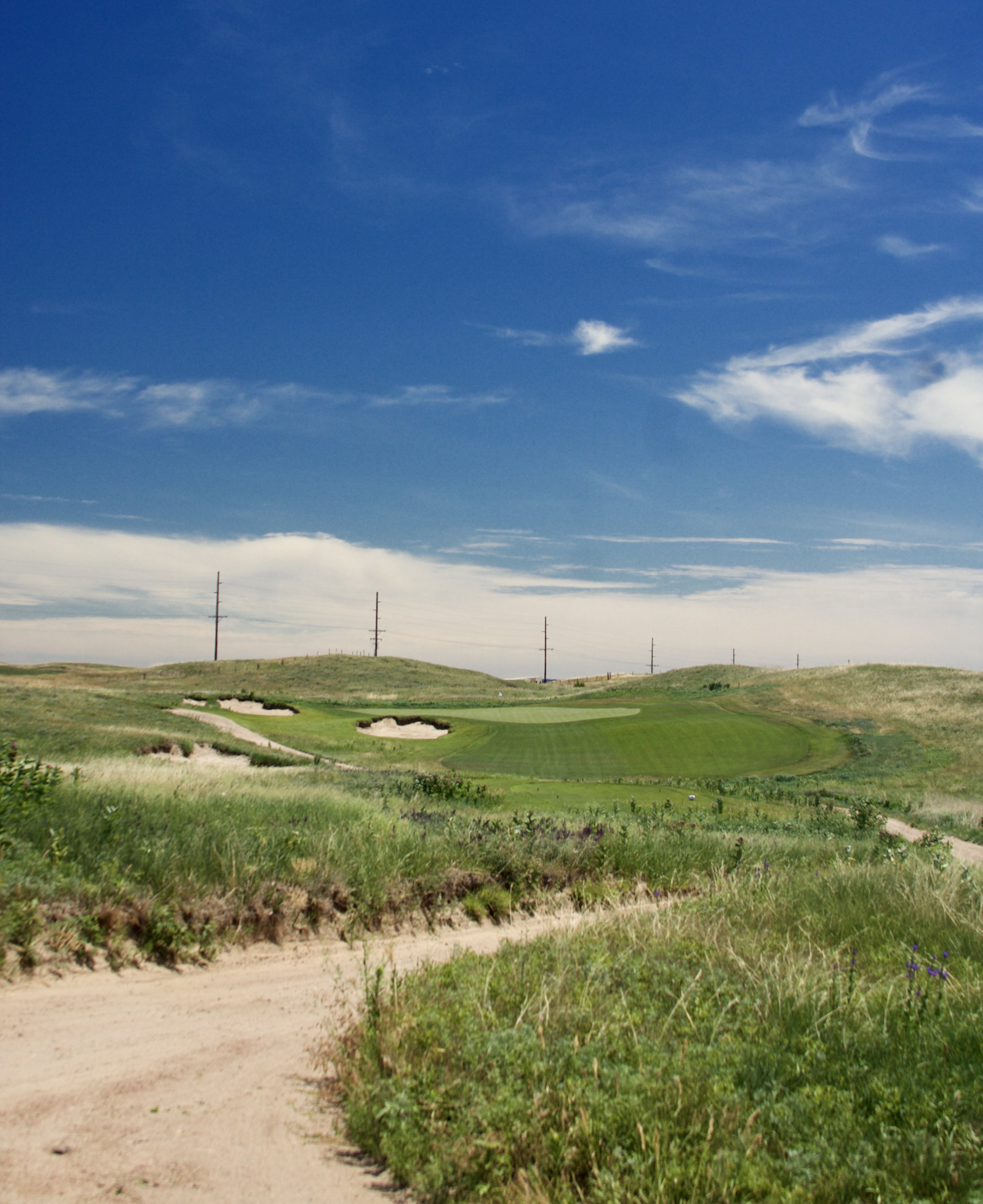The Last Frontier: 2 - Wild Horse
Wild Horse is the itch the Subtletees crew needed for their hidden gem scratch, making this course an absolute must on anyone’s Mid-western golfing trip.
We did not want to stay the night in Omaha; too muggy, far too difficult to drive in, and the good golf was calling our names elsewhere. We left the Omaha Country Club parking lot with a smile and high expectations, leaving a trail of exhaust smoke from our RV behind us so that we could barely make out the perfectly built, beautiful brick clubhouse we had just taken free, hot showers in. That was the one thing that was comedic about the trip, and something that maybe not everyone wants to sign up for: hygiene, or more like the lack thereof. There wasn’t a lot of it in any sense of the word. We got lucky at Omaha with them giving us guest lockers to utilize and all the amenities, including one, good last shave before we headed out into “the unknown”. That’s at least how everyone in Omaha put it, referencing to western Nebraska like we were taking a horse and buggy across the Oregon Trail. Were we going to need to stop by the occasional lake or stream when the sweat had built up just a little too much? Or maybe sneak into the local YMCAs along the way? How were we supposed to show up to all these nice places looking and smelling like Carl Spackler? We were okay with leaving all of that up to chance. Our priorities were far elsewhere.
There are two words that automatically come to mind when anyone starts discussing Nebraska golf: Sand Hills. Yes, it’s a geographical location as well as a geological phenomenon, but when in reference to golf, there is no confusion about what they actually mean. To know Nebraska golf is to know Sand Hills. Dick Youngscap, a Lincoln based developer that helped make Firethorn Golf Club, set out to make a course that was far and away different from what American golf symbolized. He longed for wider fairways, wind swept bunkers, and a wide open landscape that could supply the kind of golf he saw and fell in love with throughout the British Isles. He found it in the form of thousands of acres of glacial dunes, left there from the last ice age that passed through, about 12 miles outside the town of Mullen, Nebraska. Legend is, when sitting down with the investors who were at least interested to hear what Youngscap had to say, they were shown two side by side images. One image of bare, untouched duneland in Scotland, and one image of bare, untouched duneland in Nebraska. “Guess which one is located in Scotland”, asked Youngscap. The pictures being almost identical, the investors got the jist of what he was trying to say: this golf course, if done right, would be simply unbelievable.
Sand Hills Golf Club was Coore and Crenshaw’s third ever design commission, following the Plantation course at Kapalua in Maui, and a course at Barton Creek Resort close to Austin, Texas, Ben Crenshaw’s hometown. The land was so vast, so extensive, and so good, that they compiled a possible 130 holes to choose from. How they got the routing down to only 18 holes is shocking, but so is Coore and Crenshaw’s design portfolio, which is so extensively impressive it would be inappropriate to try and summarize it here and now. Each course they put their names on will last for hundreds of years, and most of them, especially the ones made on true linksland, look as though they were made hundreds of years prior, rather than brand new. They wrote the book on saying no to average sites so that their brand would be known for exclusively amazing ones, a model that many architects now follow.
Building on clay and other poorly draining soils is not easy, and not ideal for golf. The architects who are willing to take the bad and unwilling soil usually did it for the money, not knowing when the next project would come along. And for architects who are starting off and just trying to keep the name on the front of the building, those projects have to be taken. There is no way around the fact that the bills need to be paid. But there comes a time, for some taking longer than others, that declining a job does a lot more good for the brand than bad. If a client has a fantastic piece of land, say something like Sand Hills, it’s hard to give it over to somebody that doesn't know how to deal with massive pieces of property like that. One's legitimacy in the process of taking projects is what kind of work they have done prior to the project, and you only build up that kind of repertoire with discipline and patience. Bill and Ben had a lot of patience over their careers and it worked out for the better, one great piece of property after another. They didn't build their name alone however.
The shapers make up the heart and soul of the course. Every hump, bump, and hillock that exists on that course was either intentionally molded for a heightened sense of fun and strategy or purposefully left due to its natural perfection for golf. They are the designers best friend, and most of the time, have an amazing sense of design for themselves. Dan Proctor and Dave Axeland, the lead shapers for Coore and Crenshaw, were the two men that made those decisions out at Sand Hills. These were the two men that created that heart and soul for one of the greatest modern courses ever made. It is commonplace for associate designers and shapers to start their own entity and make their own name known. So BunkerHill Golf Inc. was born, Dave Axeland and Dan Proctor’s brain child. Their own personal statement to the world of golf. And, it just so happens, that their first gig was in Gothenburg making a course for some farmers that figured they would try their hand in golf instead of corn and cattle feed.
We had been on the road for three hours, the Omaha to Gothenburg leg being one of the lengthiest of the trip. The Chick-fil-a wrappers were empty from dinner two hours prior, and we were ready to get there. I was laying down on the couch, scrolling mindlessly through Instagram when I saw the entire sky light up in a piercing, purple beam. My California-born brain didn’t quite compute what was going on immediately, being unattuned to Midwestern weather theory. The clouds started to contrast with the lightning, and it made for a serious lightshow I will never forget. But what followed I would like to forget. Kevin was driving the RV that, when got up to about 65 miles an hour, had roughly two inches of unresponsive play in the steering wheel. So when rain started to fall, we got a little worried. When hail started to fall, we got more worried. And when the rain, hail and 30 mile an hour gusts started to all work together, Kevin could barely control the wheel anymore. We were forced to find refuge in a gas station parking lot, full of semi-trucks that had all had the same experience we did. We were just 15 minutes from our designated RV park, an arm’s reach that, although is practically right around the corner, probably would’ve seemed like an absolute eternity in those conditions. Welcome to Nebraska, boys.
The clubhouse at Wild Horse looms high above the course atop the tallest hill, the property being draped out on every side like a subtle blanket of varied yellow, brown, and green grasses. One of the first comparisons that came to mind was actually Shinnecock Hills, with its clubhouse being somewhat shaped and positioned the same way. The pro shop is humble, selling a couple of pin flags here and a couple of poker chip ball markers there. The range is just simply a mown down area with some flagsticks shoved in the ground. And it’s all that was really needed. The golf would speak for itself. It didn’t need fluff to support its case.
The evidence that Wild Horse is one of America’s most hidden gems is the understatement of the century. Of all the places we were to play, the first place all of us would go back to first, unanimously, was Wild Horse. We knew going in that there was something special about it, but we did not expect what we experienced one, slight bit. Before we set out for the first tee, appropriately positioned about 20 steps from the pro shop door, I asked the head professional, Tony Collins, what Wild Horse can teach the world of golf. “Life isn’t fair. You’re gonna have some bad times, and you’re gonna have some good times. There are gonna be times when you get good bounces and times when you get bad bounces. That’s just life. But life is a beautiful thing either way, so might as well look at the view and enjoy the green grass under your feet.” We got bad bounces and good bounces out on the course, the subtle and sometimes not too subtle undulations shooting your ball in different directions. The group was awestruck at the beauty of the place, the par-4 8th being one of our favorite holes. The strategy is immaculate and daunting. Off the tee, there is one of the largest bunkers on the property staring right at you, ready to eat your ball for lunch. In order to have the best line into the green, you have to get close to the “Wooga”, the locals word for native grasses which acts as the courses rough, on the right side . The rippling fairway makes sure of one round not being the exact same as the other, making the temptation to go around again and again present even till the sun was about to set.
The average golfer won’t admit this, but there are some bunkers that are either too famous or just so cool looking, that when a ball is found in the bottom of one, a little glee is let out. Thousands of people a year throw an extra ball into the famed “Road Hole” bunker at the 17th hole at The Old Course, trying to see if they have what it takes to get up and down from the very spot in which so many players have tried and failed. All through Nebraska, we would come across some bunkers so gargantuan that we referred to them as “Sarlacc pits”, based off of the creature in Star Wars: The Return of the Jedi in which those who fall into its giant sand covered mouth would be digested for a thousand years. The fairway bunker on the 8th was one such like this, looking as though it hadn’t been touched since the last ice age. Jack found his drive in it, and being the drama and comedy filled actor that he is, started playing the score from Denis Villenueve’s Dune, picking up a handful of sand and exclaiming, “Look at all this spice!”
Josh Mahar started his career where Nebraska golf did. You guessed it, Sand Hills. He was brought on as Assistant Superintendent until he was asked by Axland and Proctor to come to Wild Horse while it was still being constructed. He loved the project so much that he decided to stay in Gothenburg. Mahar has been there for the last 23 years and has raised a family just down the street. He brought everything he learned from his previous experiences. So do me a favor and imagine with me for a minute. A public track that only a few people really go out of the way to play, whose walkability, strategy, and beauty are off the charts, maintained the same way Sand Hills is, in which green fees are in the double digits. You do the math.






